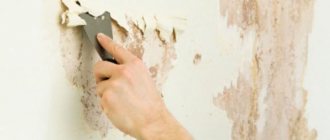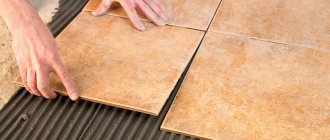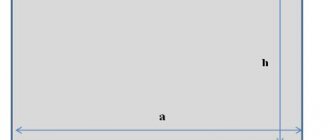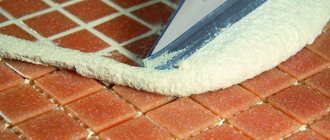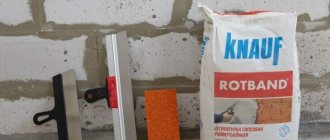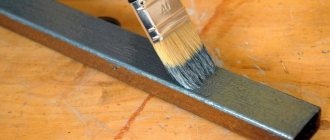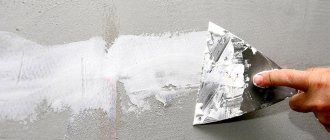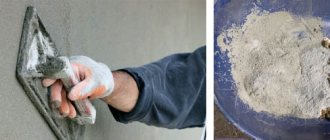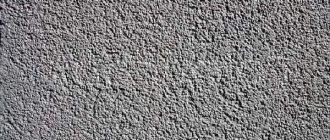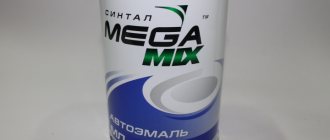High-quality construction and finishing work is almost impossible without the first preparatory stage. The duration of the absence of emergency situations at the facility, as well as its service life, directly depends on it. The implementation of roofing and waterproofing procedures is based on priming. Experts recommend treating surfaces with bitumen primers.
Waterproofing with a bitumen primer can improve adhesive properties and remove dust from the structure.
general description
This composition is a homogeneous black liquid, which is a solution of petroleum bitumen. To soften them, conditions are required, characterized by a temperature of 80 degrees or more, and organic substances act as a solution. There are no foreign inclusions in the mixture, and there should be no inhomogeneities. The mixture does not contain toxic solvents such as toluene. Roofing and waterproofing work will be made easier if you use a bitumen primer. With its help, you can reduce the time of manipulation, improving the quality of waterproofing.
Types of bitumen primer
The consumption of bitumen primer per 1 m2 will allow you to understand how much mixture you need to purchase. However, to purchase the composition, it is also important to know the varieties of this mixture. Bitumen primers are available for sale in concentrated or ready-to-use form. Before use, the concentrate must be diluted with an organic solvent, namely kerosene, gasoline or white spirit. In this case, the ratio should be 1 to 2. The use of concentrate allows you to save space during storage and transportation. If we are talking about a ready-made primer, then there is no need to carry out additional procedures with it except mixing. It is ready to use and easy to use.
Betonokontakt Knauf
Also, the sweep consumption depends on the manufacturer. Different manufacturers have their own composition and proportions, which changes the amount of material consumed. For example, you can consider the consumption of Knauf Betokontakt primer per 1 m², its properties and consumption.
This mixture is used for foundations that do not absorb moisture or do so poorly. In this way, the material for plaster or putty is prepared. You can also consider the technical characteristics of the Knauf Betokontakt primer, which also includes the composition consumption:
- dries in less than a day;
- good concentration;
- applied by roller or mechanically;
- mixture consumption is 250-350 g per 1 m², taking into account that the material was not previously diluted.
Application area
If you decide to use the described composition in your work, then you should know the consumption of bitumen primer per 1 m2. To form one layer it will be necessary to spend from 0.25 to 0.35 kilograms per square meter. The final figure will depend on the roughness and adhesion ability. Naturally, the least amount of materials will be spent on monolithic, durable and smooth surfaces, while if we are talking about rough, porous and loose bases, the consumption will be greater. If you know the consumption of bitumen primer per 1 m2, then you will be able to determine how much mixture you need to purchase. To do this, you need to determine the area of the surface to be waterproofed, and then divide it by the mentioned consumption.
Bitumen mixtures are used for priming surfaces such as asbestos cement, concrete, metal, reinforced concrete, wood and porous materials. Among other things, you can use bitumen primer to carry out work in the field of roofs, as well as for waterproofing, while the mixtures are used as independent waterproofing materials, as well as in combination with other self-adhesive and weld-on materials.
Bitumen primer is used for waterproofing foundations, bridge spans, flat roof bases, underground structures and structures, as well as the surfaces of metal pipelines. The product can be used to protect metal surfaces from corrosion.
Standards of use
The consumption rate of bitumen primer per 1 m2 was mentioned above, but to achieve a positive result it is also important to know the technology of the work. The mixture is applied to cement-sand, concrete and other rough surfaces. If we are talking about a porous, dusty and uneven surface, then the treatment must be carried out using a brush or nylon brush. This application technology provides excellent impregnation of the base and high adhesion rates.
Surface priming allows you to increase the service life of materials. If there is a need to glue roll materials using a primer, the surface of reinforced concrete and concrete slabs, as well as the seams between the elements, must be primed. Each subsequent layer of rolled material is glued 4 hours after installation of the previous one. Rolled materials must be laid with an overlap, the width of which is 100 millimeters. In this case, cross-gluing should be avoided. Once the web is in place, it should be rolled with a special-purpose cylindrical roller.
Main characteristics
Information about the consumption of bitumen primer per 1 m2 of surface, of course, is important. However, before purchasing this mixture, you should familiarize yourself with the main characteristics, including: quick drying, waterproofing qualities, inhibition of corrosion processes, the ability to use at low temperatures, a high level of adhesion, resistance to heat, the ability to use for gluing roll materials, and the presence water-displacing characteristics.
If the average ambient temperature is 20 degrees, then the surface on which the primer was applied will dry within 12 hours. If necessary, the product can be applied even in winter, but the base must first be cleared of dirt, foreign elements, snow and ice. Before work, the surface should be dried, the rolled materials should be heated in a warm room where the air temperature is +15 degrees or more. Work should not begin if the ambient temperature drops below -20 degrees.
Storage
In a tightly closed container at a temperature from -30°C to +50°C, away from heating devices and open sources of fire.
Shelf life – 12 months.
Description of material:
Bitumen primer is a composition based on high-quality petroleum bitumen, organic solvent and plasticizer.
Peculiarities:
Bitumen primer is compatible with most bitumen and bitumen-polymer materials, has a short drying time, high penetrating ability, effectively impregnates and binds dusty contaminants. Does not contain toluene or other toxic solvents.
Manufacturing jobs:
Before use, thoroughly mix the bitumen primer throughout the entire volume.
If necessary, it is possible to dilute with white spirit, solvent or gasoline solvent (do not use motor gasoline, as its vapors can be toxic). When working in conditions of subzero temperatures, it is recommended to warm up the bitumen primer in greenhouses for 24 hours at a temperature of at least +15 C. The surface to be treated must be dry, previously cleaned of dirt, fragile remnants of the old coating, snow and ice.
It is recommended to dry wet surfaces using gas burners. Clean rusty metal surfaces mechanically and treat them with Bitumast rust converter. Bitumen primer is applied using a brush, paint roller, mop or spray method.
Bitumen primer can be used at an ambient temperature of at least minus 5 C and in the absence of precipitation.
ATTENTION! It is prohibited to begin laying the surfaced materials until the applied layer has completely dried.
Storage:
Store in a tightly closed container at a temperature from minus 30? C to plus 50? C. Protect from exposure to moisture and direct sunlight, away from heating devices and open sources of fire. Do not store in residential areas or in contact with food.
Keep out of reach of children. Guaranteed shelf life in sealed packaging is 24 months. The warranty period for products in metal containers is 36 months.
Precautionary measures:
Do not use inside residential or confined spaces.
Bitumen primer is flammable! Work with bitumen primer should be carried out outdoors; when working indoors, it is necessary to ensure fresh ventilation and do not smoke. Avoid the presence of heating devices and open sources of fire. Avoid contact with skin, eyes and esophagus; use protective suits, gloves and goggles.
If bitumen primer gets on your skin, remove it with a rag and wash off the contamination with soapy water. If bitumen primer gets into your eyes, rinse with plenty of running water and, if necessary, seek medical help. If bitumen primer enters the esophagus, DO NOT induce vomiting, seek immediate medical attention and show the label.
All information and recommendations provided in this Information Sheet are based on current scientific and technical knowledge of this product. Persons receiving this product are responsible for correctly understanding and interpreting the information contained in this document when using or handling this product. The manufacturer has the right to change or supplement existing information without additional notice.
A competent approach to waterproofing in a building is the key to its long service life. In waterproofing roofs, basements, foundations and walls, a ready-made bitumen primer is widely used. Its use makes the insulation coating better and more durable.
Consumption rates of bitumen primer for different surfaces
Quite often, professional builders and home craftsmen are interested in the consumption of bitumen primer per 1 m2 of concrete surface. This figure can vary from 250 to 450 grams per square meter, which applies to slate and plastered surfaces. If the application is carried out on steel structures or metal, then the consumption will be 200 grams, on the base of wood the consumption is 300-350 grams per square meter, on the old rolled roofing the consumption can reach 500 grams per square meter. When repairing a roof over a coating with powder, the consumption increases to 750-900 grams per square meter.
How to calculate the required quantity
The ability to calculate bitumen primer consumption will help you prepare the required amount of product at once. The average indicators are prescribed on the packaging of a particular product, and this figure serves as a guide. However, it may become larger if the application is carried out on a porous surface structure, which will impregnate part of the material, and in order to obtain a smooth surface, more product will need to be applied.
To obtain the number of kilograms of product required for finishing. The first step is to calculate the area of the surface being treated. The result is then divided by the consumption rate.
The average indicators are prescribed on the packaging of a particular product, and this figure serves as a guide.
Consumption of bitumen primer "TechnoNIKOL"
The consumption rate of Technonikol bitumen primer per 1 m2 should interest you if you are going to use this composition for waterproofing work. For 3.3 square meters of surface it will take approximately 1 liter, which is 0.3-0.35 liters per square meter. Application should be carried out with nylon brushes or brushes if it is necessary to treat hard-to-reach and complex areas, while uniform distribution is carried out over the surface using a roller. To pre-clean the surface from dirt and dust, use a polypropylene broom. To form a reliable layer that will be characterized by continuity, the surface must be cleaned of remnants of old waterproofing. The consumption of Technonikol bitumen primer per 1 m2 may vary depending on the characteristics of the base.
Nuances when carrying out work
The bitumen composition must be heated with extreme caution, excluding contact with an open flame. Mastics that require the use of solvents must not be used in confined spaces. To avoid toxic poisoning, it is necessary to work with bitumen primer in the fresh air using personal protective equipment (gloves, special suit, goggles).
The consumption of bitumen primer 1m2 should be known to you if you are going to use it for waterproofing work.


